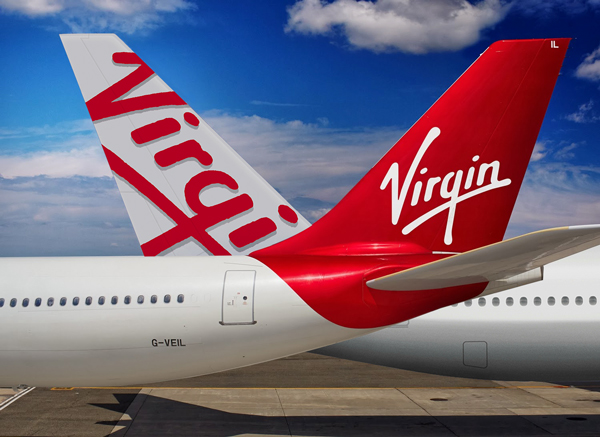Better Marketing
The law of attraction, brand personality, and attracting the right customers.
You’ve probably heard of the law of attraction before. Where you focus on what you
want in your life, and eventually, it appears. And whether you believe it or not, it’s almost impossible to deny ‘like attracts like’ in this world.
If you have a bright and cheery disposition, you’ll generally be drawn to similar people, and they’ll be drawn to you in return. Now, if you keep this in mind, you can actually use it to focus your efforts, develop a brand personality – and indeed internal culture – and increase the effectiveness of your marketing. Sound good? OK, here’s how to do it.
Who do you want to attract?
First of all, you need to be pretty damn clear on who you want to attract. In other words, who are your ideal customers? Now you may have a handle on this already, but you need to go a little deeper than simply ‘people who need financial advice’ for example.
You need to dive deeper, and get into their heads. What do they think about? What drives and motivates them? What keeps them up at night worrying? What problems do they face every day?
Look online for research reports. Examine your existing customer database. And perhaps most importantly, talk to them! Do they actually care that you always respond to their emails within an hour, or is it the fact that you save them money that’s more important?
Another way you can find out what people are thinking or concerned about is from what’s trending in that area on social media, and what people are searching for online (aka keyword research). (If you don’t know how, these are basic marketing techniques, get in touch and ask us!)
It’s obviously different for every business, but just be aware, that sometimes what you think is likely to be important to your customers isn’t quite on the mark.
Anyway, the main point is to find out about your specific target market as much as possible.
Put yourself in their shoes, and form a picture of the person your business can help the most.
Adjust your approach and brand as needed
Now with that knowledge in mind, you may need to recalibrate things a bit … or a lot!
This could potentially even start with the company name. For example, in an increasingly volatile world, you find that people looking for more certainty in the financial advice market? So, you might consider a rebrand from, say, Complete Financial to, for example, Secure Financial – to attract those people and capitalise on the new sentiment you discovered.
Of course, a name change is a big step, but adjusting the brand isn’t quite such an upheaval. The look of the website, the tone of voice used, the emails you write, the music people hear when they’re on hold, even the type of people you hire – should all reflect the brand personality you’ve settled on to tap into your newly revealed market opportunity.
Qantas vs Virgin – two very different brand personalities
Think about Qantas and Virgin, for example. Two airlines that ostensibly deliver exactly the same service – getting you from A to B in an airplane. Yet they’ve each adopted a very different brand personality to appeal to different market segments.
Consistent with the master brand, Virgin want to attract a young heart audience who don’t care for convention, and they’ve adjusted their behaviour accordingly, becoming the challenge brand that ‘does things a little bit differently’.
On the other hand, Qantas are dependable, mature, and appeal to a slightly older traveller.
This difference can be seen and experienced at every touchpoint. Virgin employees tend to be younger, and the uniforms are more fitted and fashionable. The signs on their toilets say ‘guys’ and ‘girls’, as opposed to the traditional ‘Ladies’ and ‘Gentlemen’ that you get in Qantas. Even their in-flight announcements might feature a joke or two, something Qantas would never do! Everything they do has been adjusted to attract the kind of people they’re best placed to serve. The brand personality is consistent through its behaviour, terminals, staff and marketing, and it works.
Mac vs PC
Another example of adjusting your behaviour to attract the right customers is from Apple.
And it’s possibly one of the most obvious, visual – and effective – demonstrations of brand personality I’ve ever seen.

The two characters you see above (or personalities, if you will) were literal representations of the brand, the product, and how the consumers actually viewed themselves. The ads always opened with the lines “Hello I’m a mac”, “And I’m a PC”, then moved into a little conversation where the benefits of a mac were made obvious, along with the limitations of the PC.
The ‘mac’ was likeable, smart and clearly more useful than the PC, but not boastful with it. In short, he was the absolute mirror image of how mac users saw themselves at the time.
If you’ve never seen any of these ads, you must have a look here. There were 66 of these shorts created in total, and they’re an absolute masterclass in adapting your behaviour to those you want to attract and presenting a clear brand personality that resonates with the target audience.
My personal favourite is when they’re both sitting in a therapy session, and are asked to say something nice about each other.
“PC, you are a wizard with numbers and you dress like a gentleman.”
“Well, mac, I guess you are a little better a creative stuff…
… even though it’s really juvenile, and a waste of time…”
It’s perfect. Openly admitting PCs are better at certain things, while macs are better at others, with the brand personality coming through to make the personal, emotional connection with the prospect too.
We don’t all have enormous budgets like Apple, Virgin or Qantas – but you get the idea. (As a matter of fact, the Apple ads were not expensive and could actually be shot and edited on your iPhone nowadays! Or may even your Samsung phone).
As always, we could go into this in much more depth. How to use your target market insight to focus your messaging until it’s razor sharp, and how to adjust the tone of voice in different channels or environments, but we’ve got to draw a line somewhere.
So, if you want to attract the right customers, first determine to get under their skin, understand who they really are and what they really want, adjust your brand personality and behaviour to suit, and become a magnet for people “just like you”.
Now you have the basics, as always, if you’d like some help with it all, just give us a shout.



